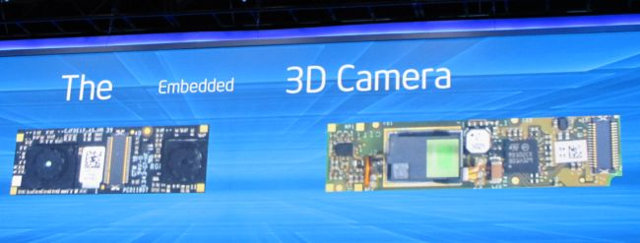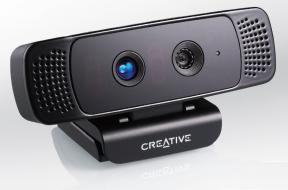Mooly Eden, Intel Senior Vice President and General Manager, gave a presentation at CES 2014 about Perceptual Computing, introducing Intel RealSense Technology that is currently comprised of a 3D “depth” camera, and Nuance Dragon Assitant voice technology in order to bring “Natural, Intuitive, and Immersive user experiences”.
 Dragon Assistant is a personal voice assistant that uses natural language understanding for Windows 8 Ultrabooks, notebooks, all-in-ones (AIOs), and tablet devices, and will be available in computers (Ultrabooks, AIO computer, and Tablets) from Acer, Dell, HP, Asus, Toshiba, and Lenovo in 2014. It’s very similar to what’s you’ve got with Siri on iOS or Google voice search, but the quick demo they’ve shown it could understand you without being specific. You awake the assistant by saying “Hey dragon”, and they tried with queries such as “I want to watch an episode of Family Guy” that started Hulu with a list of relevant videos, and a search for local hummus restaurants launched Yelp.
Dragon Assistant is a personal voice assistant that uses natural language understanding for Windows 8 Ultrabooks, notebooks, all-in-ones (AIOs), and tablet devices, and will be available in computers (Ultrabooks, AIO computer, and Tablets) from Acer, Dell, HP, Asus, Toshiba, and Lenovo in 2014. It’s very similar to what’s you’ve got with Siri on iOS or Google voice search, but the quick demo they’ve shown it could understand you without being specific. You awake the assistant by saying “Hey dragon”, and they tried with queries such as “I want to watch an episode of Family Guy” that started Hulu with a list of relevant videos, and a search for local hummus restaurants launched Yelp.
But the most interesting part was the part about the 3D camera which can detect depth and different demos:
- Holding a teddy bear in front of you, and apply effects on you and the background, but not your plushy.
- Use Skype with a background image without the need for a green screen via Personify plugin
- Augmented reality game which you can be part of with grass growing through your finger, and a little man walking on your arm
- Another game that recognized precisely your hand and fingers, which are used to move creatures from one part of the screen to the other avoid the lava.
- Educational applications where kids can use their hands to interact with their hands to learn the alphabet, or to learn how to read
- Control Google Street View by simply turning your head left, right, or up and down.
- And so on.

It’s a little like Leapmotion on steroids, as Intel 3D camera and software allow you not only to accurately control your computer or device with gestures but can also handle visual effects by detecting depth.
Intel also partnered with 3DSystems to create 3D models using the 3D camera, in order to print them on a 3D printer.
Intel recommends Creative Senz3D camera ($179) to get started with development and provides a list of depth technology apps, as well as Intel Perceptual Computing SDK Beta 2013 available for Windows 7 and 8 only. Alternatively, you could also order a Creative Interactive Gesture Camera Developer Kit for $149, which appears to be the same as the Senz3D camera, but possibly with a longer lead time, and a warranty limited to 90 days.
Further information is available on Intel RealSense page, and if you are interested, you can watch a recording of the Intel presentation (about 50 minutes) via their CES 2014 press page.

Jean-Luc started CNX Software in 2010 as a part-time endeavor, before quitting his job as a software engineering manager, and starting to write daily news, and reviews full time later in 2011.
Support CNX Software! Donate via cryptocurrencies, become a Patron on Patreon, or purchase goods on Amazon or Aliexpress




